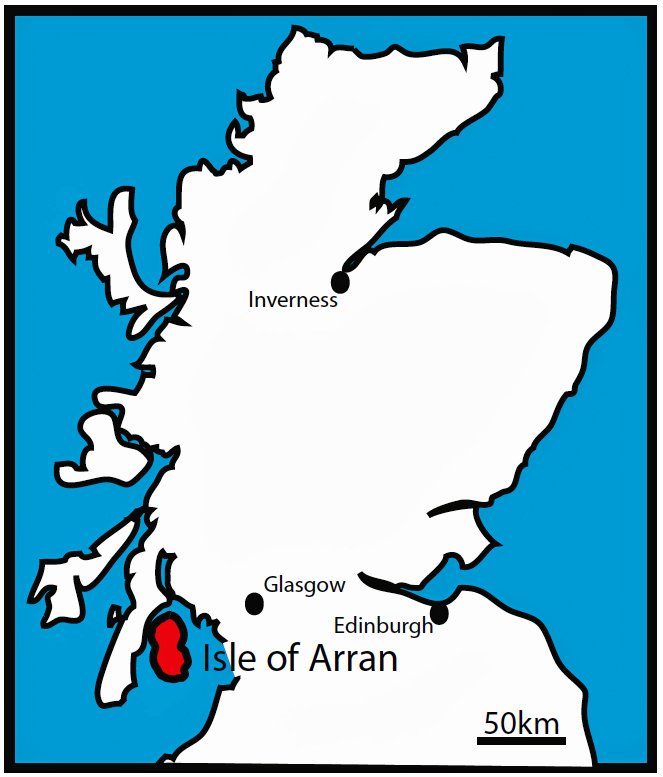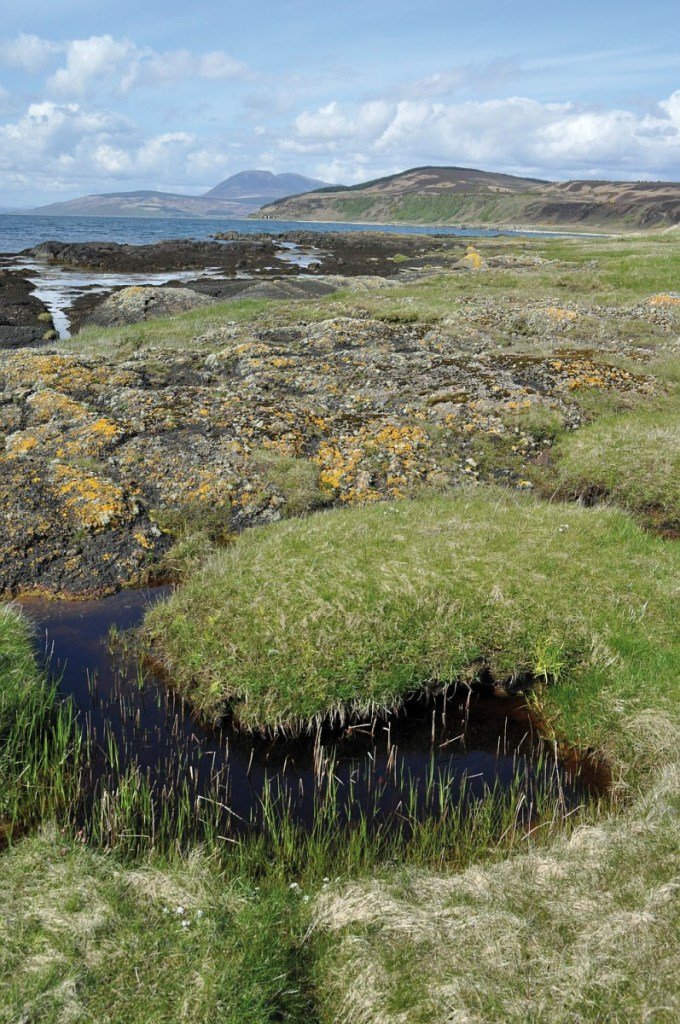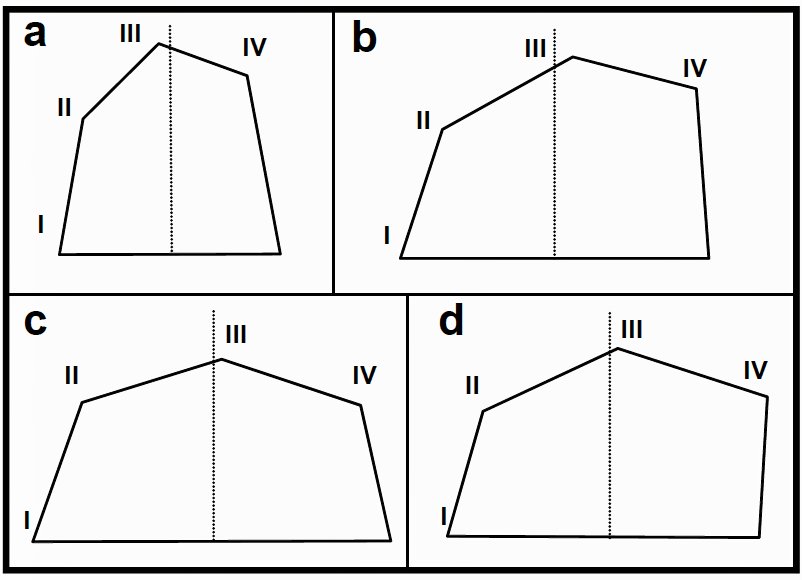Neil D L Clark (UK)

In about 1999, a single, fossilised footprint was found on the Isle of Arran, off the west coast of Scotland (Fig. 1). It was identified of earlier than this, however saved secret in case it was vandalised. At the moment, it was the primary, and solely identified, report of this sort of footprint in Scotland and was, subsequently, an necessary discovery. It consisted of a giant, hand-shaped, rear footprint and a smaller offset entrance footprint of a giant chirotheroid (‘hand-animal’) animal (Fig. 2).

Some of these footprints are well-known from Triassic rocks throughout the border in England and elsewhere on the planet, however have been unknown in Arran or, for that matter, Scotland. There have been some footprints from Corse Hill Quarry, Annan close to to Dumfries, that have been talked about in outdated papers from the 1850s. Nevertheless, as there have been no collections made or sketches of the footprints, they continue to be unsubstantiated as chirotheroid footprints. There are many different footprints from the Triassic of Dumfries, however none are of the chirotheroid kind.
I used to be advised in regards to the 240 million-year-old, lower-Center Triassic footprint by Hammy Corrance of the Open College Geological Society, who had been to the locality on Arran throughout a fieldtrip in 1999. It had been described as a “dinosaur footprint” throughout this relatively wet fieldtrip, and few paid a lot consideration to it. Hammy later returned to the positioning and made a cast of the footprint using air-drying clay, which he showed to me in early 2001.

The footprint was originally discovered by Peder Aspen, who showed it to various students during undergraduate fieldwork teaching classes from Edinburgh University, but kept it a secret until 1999. Peder, Hammy and I decided that it was an important discovery and that a cast should be made of it so that a permanent record of the footprint could be kept in a museum collection. This would help preserve a record of the footprint, should the original become damaged in some way.
Unfortunately, when I had planned to go to Arran to make the cast in early 2001, I was refused access to the island. This unusual state of affairs arose as a result of the foot-and-mouth crisis that gripped the whole of the UK, at that time. After many frustrating months of waiting for the all clear, Hammy and I were finally allowed to visit the island in August, but with many caveats, including making sure that the soles of boots were kept clean, washing wellies in buckets of disinfectant before entering fields and not interfering with livestock.
We shared the load of carrying the silicone rubber, fixatives, catalysts and fibreglass on the way out to the locality, just north of Blackwaterfoot, on the south-western coast of Arran. The rubber was heavy and the distance was about a 1.5km, over the fields near Drumadoon (Fig. 4). The footprint was on a loose block of vertical sandstone, beside a small stream, hidden from the path, by thick foliage. It certainly made us think about how on earth Peder had been able to find this specimen in the first place. It was certainly a well-secluded site.

All went well with the moulding, in fact, better than well. The weather was dry and the rubber, backed by fibreglass, took only half an hour to harden for each layer. During that time and as it was low tide, Hammy and I decided to have a walk about on the foreshore to see what we could find. The rocks were of the same age and, although frequented by multitudes of geologists annually, we thought that there was still a chance of finding something interesting. It also provided us with an opportunity to record some of the sequence of sediments to see if we could do any correlating with the cliff section.
Immediately below our feet, we began to recognise telltale indentations in the sediments. The rocks were rich with footprints and we found nearly 40 footprints on this visit alone, including the first in situ trackways of these chirotheroid footprints. The afternoon was spent measuring lengths, widths, paces, strides, angles, travel directions and anything else we could think of, before the tide returned to cover the tracks. Once the rubber-mould was finished, we peeled it away from the rock and discovered that it weighed a lot more as one piece than it did as components. This made the trek back to Blackwaterfoot laborious, but the excitement of the discoveries kept our spirits high.
As I was writing the scientific paper on the footprints, I found out that another ‘dinosaur footprint’ had been found in the 1980s, near Levencorroch, about 11km southeast of Blackwaterfoot, and placed in the Oxford University Museum. The specimen had been later identified as a left footprint of Chirotherium, but nothing was ever properly published about it. It is sometimes difficult to find out about fossils, even when they are in public repositories such as museums! Therefore, it turns out that the first discovery of a chirotheroid footprint in Scotland dates back to the 1980s and was discovered by AG Plint. However, it shows that, sometimes, a discovery has more value where it was found than where it ends up!
As a result of these discoveries in 2001 and before, as well as after, the report was published, further footprints began to turn up. The first came from a loose block on the beach near Kildonan in the south of Arran. It was a complete footprint in 3D that had been separated from the enclosing sediment in the same manner as the one from Levencorroch. It was found by Fiona Gorman, a keen volunteer at Arran Heritage Museum in Brodick and it was rightly placed in the collections of that museum. If anyone now has difficulty finding the footprints at Blackwaterfoot, then there is always the footprint in the museum at Brodick they can drool over!
Despite this discovery, there was not yet enough to draw me back to Arran to research this further. That was until the discovery that John and Jean Fitzpatrick of Sliddery made on the foreshore near to where they live. John sent me an email with an image of a sandstone surface, bound by two seaward converging dykes, which contained some curious depressions (Fig. 5). These depressions had claw-marks and were clearly chirotheroid in shape. Not only that, but you could count nearly 20 footprints in a line on two of the trackways that were visible in the photograph.

Hammy also visited Arran again and discovered more footprints near to Kildonan. Therefore, the time was ripe for another visit.Hammy and I stayed in Blackwaterfoot in 2007 and spent a week wandering around the beaches between Kildonan and Blackwaterfoot discovering more and more footprints and trackways. Well over 100 footprints are now known on the southern coast of Arran. Sadly, nearly all of the footprints are in tidal waters and are frequently subjected to the erosive forces of the Atlantic swells. It is unknown how long the footprints that we found will survive, but it may be that more will be revealed as the surfaces erode down.
In 2009, I published another scientific report on the footprints with Hammy Corrance as co-author. This time, we looked more closely at the structure of the footprints and compared them with other footprints from elsewhere in the world. We decided that the footprints were not Chirotherium,as originally thought, but probably Isochirotherium. The difference is subtle and several authors consider the two ichnogenera (trace fossil genus) to be synonymous. One of the problems with determining the ichnogenus of a footprint is that there are many factors that can influence its shape, size and morphology.
For example, if you have the opportunity to walk on a sandy beach, stop and look at the footprints you make when you are walking on the compact wet sand and compare these footprints with ones produced on loose dry sand. You should find that the footprints are somewhat different in size, shape and depth. The same goes for fossil footprints. It is also important to understand that footprints can change shape depending on whether the footprint is a surface print or if it is a transmitted impression through layers of sediment below the original walking surface. Therefore, it is always important that the environment is clearly understood and whether the footprint is a surface print, or a transmitted print.
Most of the chirotheroid footprints that were looked at from the Isle of Arran are transmitted footprints. The only one that is most likely to be a surface print is the Blackwaterfoot hillside print, as it is surrounded by mud cracks, which are disturbed by the footprint. Even so, when the shapes of the footprints are compared with each other, all those measured had statistically similar shapes. Landmark polygons (a shape produced by joining identical points on the footprints that allow the footprints to be compared objectively) indicate that the footprint was of a chirotheroid animal with quite broad feet (Fig. 6). The length of the footprints from Arran also varies between about 16cm and 38cm, which is very large for this type of footprint.

There are four named ichnogenera of chirotheroid footprints: hirotherium, Synaptichnium, Isochirotherium and Brachychirotherium. The largest of the chirotheroid footprints recorded in the literature is Isochirotherium herculis, which can be up to 35cm in length. The next largest type is Chirotherium barthii, which has been recorded up to about 25cm in length. Of the other distinguishing features, the Arran footprints have a hand-to-foot length ratio (0.31-0.39), which is lower than that for Chirotherium barthii (0.45), but is about the same as Isochirotherium herculis (0.35).
Brachychirotherium has a similar hand-to-foot length ratio as Chirotherium barthii and can also be rejected as a candid for the Arran footprints, as it lacks the recurved fifth digit that these footprints clearly have. The second digit of the foot impression is longer than the fourth digit, which is also a characteristic of Isochirotherium herculis, whereas the opposite is true of Chirotherium barthii. The average landmark polygon of the Arran footprints also seems to correspond well with the equivalent polygon of Isochirotherium herculis (Fig. 7).

Although it may appear obvious that the footprints on Arran are Isochirotherium herculis, it has been recently suggested that the ichnogenus Isochirotherium is invalid and that these footprints should be regarded as either a new ichnospecies of Chirotherium or, for the time being, an indeterminate ichnogenus. The jury is still out on this, but whatever is decided, it certainly appears from the examples from Arran that it is clearly distinct from Chirotherium barthii and other chirotheroid footprints, except what has been described previously as Isochirotherium herculis. Palaeontology can be quite confusing sometimes, but it can be fun trying to untangle it all.
But what sort of animal made the footprints and why we don’t find the bones of this animal with the footprints? The animal that made the footprints was a large, 3.5m-long sauropsid reptile similar to Ticinosuchus, the bones of which have been found in Switzerland (Fig. 8). The reason why we haven’t found any examples of the bones with the footprints is probably partly because a single animal can produce a vast number of footprints in its lifetime, but only one skeleton. It is also very unlikely that they are going to die in exactly the same place where the footprints are preserved and it is more likely that their bones, or bodies, are going to be accumulated as the result of a higher energy environment with rapid rates of deposition than somehow end up next to their own footprints.

The lessons that can be gleaned from this exercise are that if you find something rare, do not keep it secret without good reason – it can lead to further discoveries that benefit the local communities through education and tourism. Further discoveries can alter our understanding of palaeontology and provide us with better and more precise identifications using statistics as well as other more traditional means.
On Arran, the local community have become involved in the search for more footprints, the conservation of those known and have donated at least one example to the museum in Brodick. For the past few years, geological groups have been shown the footprints during their undergraduate field trips and the Arran Wildlife Festival has brought the footprints to a much wider group of tourists and locals. The true impact of the original discovery is impossible to assess, but Arran continues to be one of the most important sites in Britain for training young geologists and also remains a major tourist destination. The footprints are still in situ for all to see for the foreseeable future and are well worth a visit.
Further reading
The University of Glasgow: New discoveries of Isochirotherium herculis (Egerton 1838) and a reassessment of chirotheriid footprints from the Triassic of the Isle of Arran, Scotland, Clark, N.D.L. and Corrance, H. (2009) (http://eprints.gla.ac.uk/5641/).
The University of Glasgow: Chirotherium barthii Kaup 1835 from the Triassic of the Isle of Arran, Scotland; Clark, N.D.L., Aspen, P. and Corrance, H. (2002) (http://eprints.gla.ac.uk/4498/).
Trending Products










